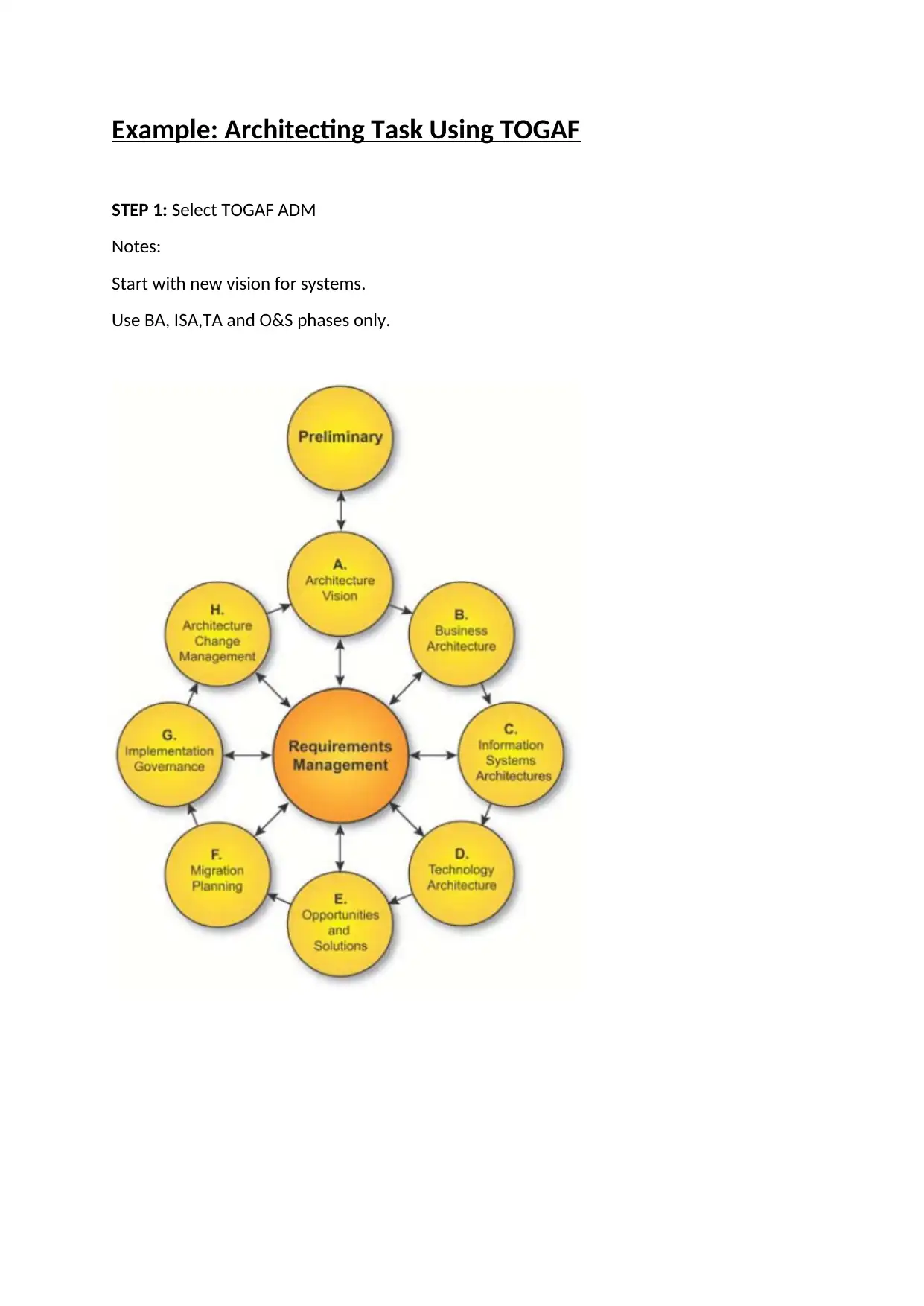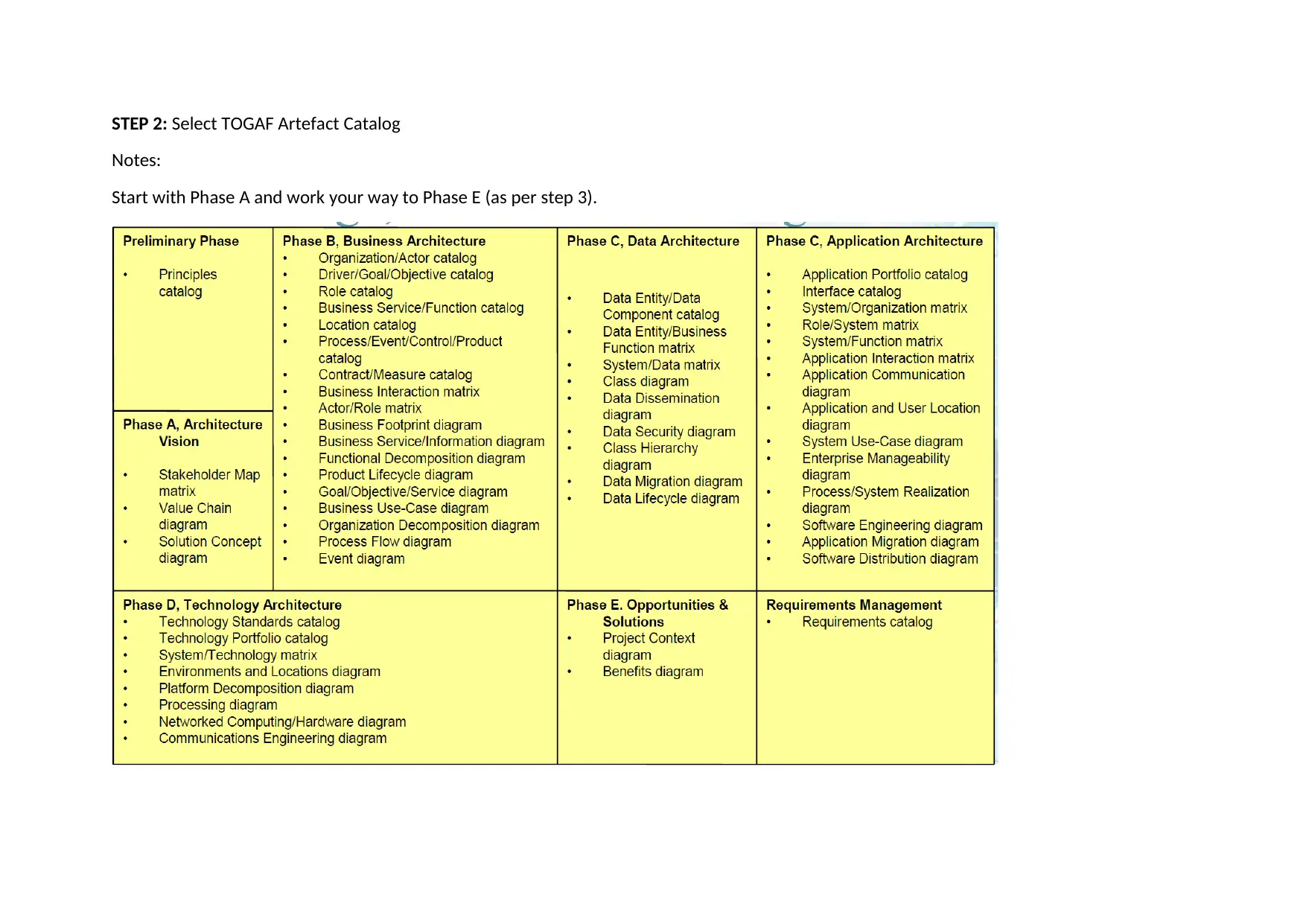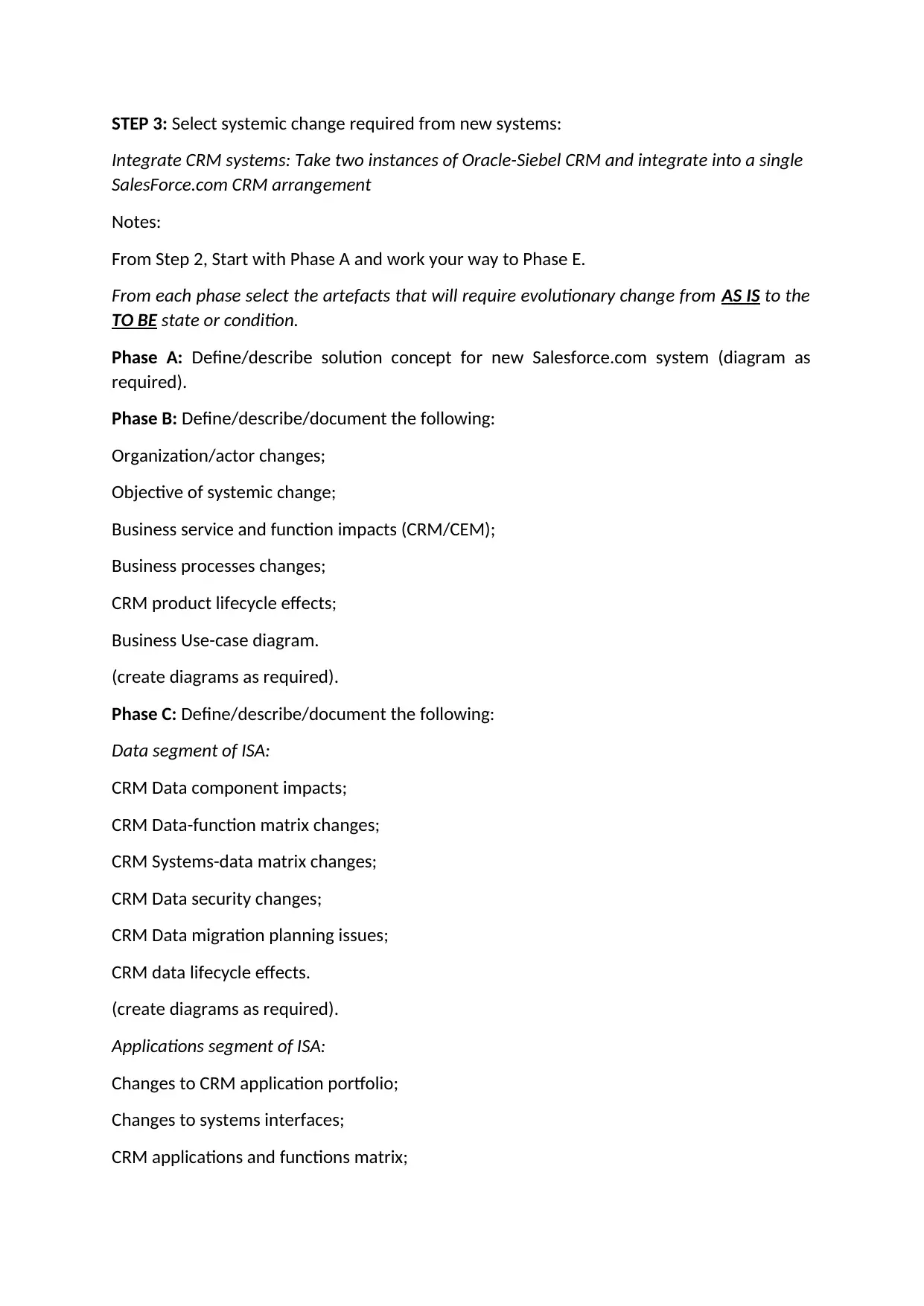TOGAF Architecture Task Solution
VerifiedAdded on 2019/09/30
|4
|393
|457
Practical Assignment
AI Summary
This document presents a solution to a practical assignment focused on using the TOGAF (The Open Group Architecture Framework) methodology to address a CRM integration task. The solution outlines the steps involved, starting with selecting the TOGAF ADM (Architecture Development Method) and the TOGAF Artefact Catalog. It then details the systemic changes required to integrate two instances of Oracle-Siebel CRM into a single Salesforce.com CRM system. The solution progresses through phases A to E, defining and documenting the necessary changes in each phase, including organizational impacts, business processes, data, applications, technology, and project context. Diagrams are suggested to illustrate the changes and concepts in each phase. The solution provides a comprehensive approach to managing the architectural changes required for the CRM integration project.
1 out of 4











![[object Object]](/_next/static/media/star-bottom.7253800d.svg)